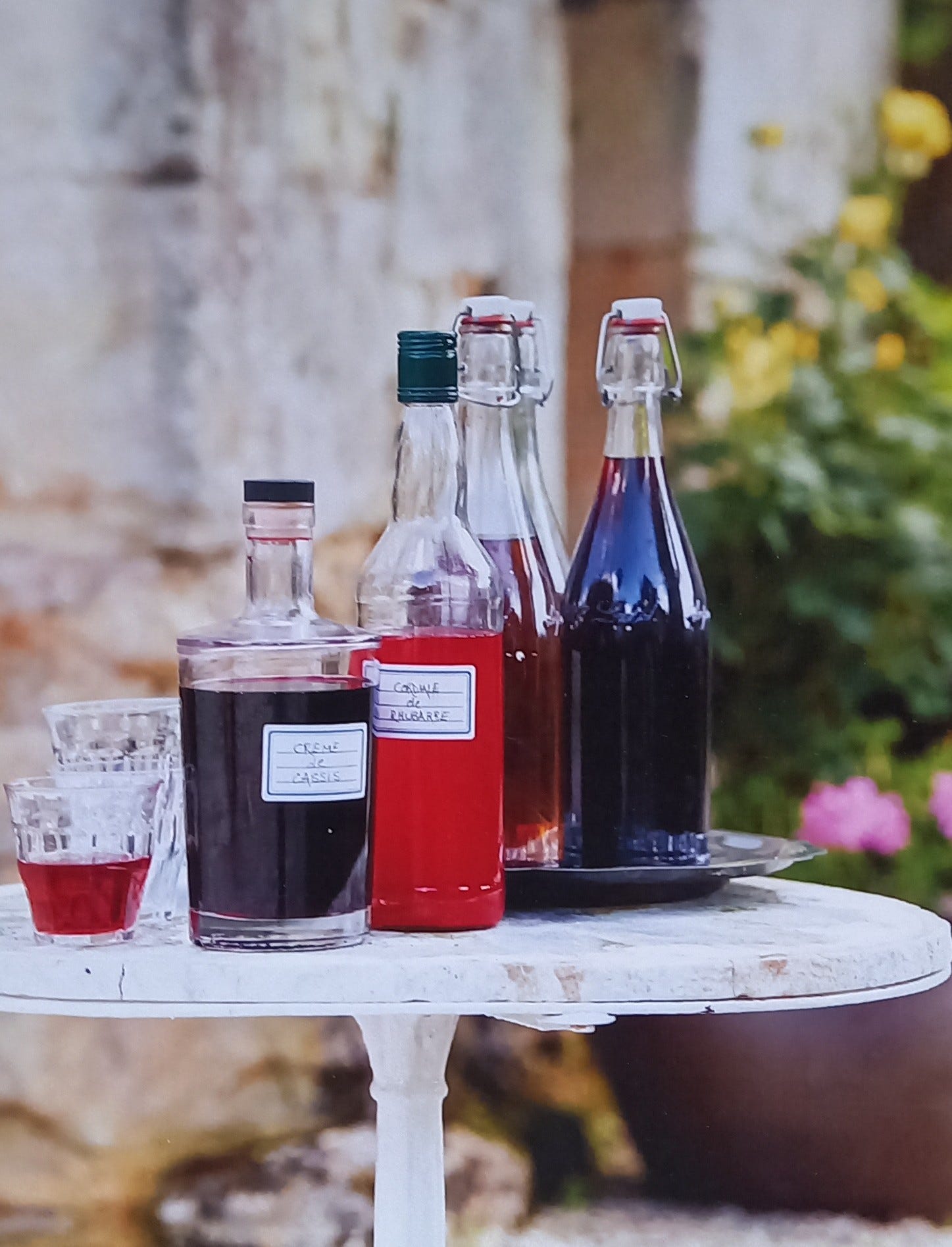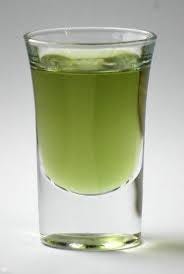Like a genie in a lamp, the spirit of summer can be captured in a bottle. Liqueurs, I’m talking about here. You may perhaps sneer at a liqueur as a drink fit only for people of grandparent age. Cocktails have a far more saucy edge. Yet I bet you wouldn't turn down a Limoncello were one conveyed to you at your favourite Italian restaurant, complimentary with your check. It’s a far cry from the Crème de menthe that the word ‘liqueur’ may have conjured up in your head.
Russian composer Sergei Rachmaninoff was a teetotaler. Nevertheless, about to premiere his technically demanding piano score Rhapsody on a Theme of Paganini in 1934 with the Philadelphia Orchestra conducted by Leopold Stokowski, he became uncharacteristically nervous. So, to steady his nerves, he drank a glass of Crème de Menthe, that toothpaste-flavoured liqueur beloved of post-war debutantes. The performance went so well that before every subsequent one, he drank a glass of Crème de Menthe, referring in private to the work as the ‘Crème de Menthe Variation’.
If you’re in any way curious about liqueurs, this is the time of year to make them - from late summer fruits. These are probably not at their saleable peak of beauty, so are available more cheaply. But it is the moment of their perfect flavour, the full development of their sugars accentuating their taste just before they tip over, from one minute to the next, and rot.
In the colourless chill of dreary winter, liqueurs deliver souvenirs of the seductive summer season. Plus, they make pretty damn brilliant presents to give at Christmas - impressive, delicious, and not hugely expensive. Start saving up, and sterilising a hoard of good-looking bottles from the empties of your spirits supplies. (What do you mean, you don’t have any?) Happily, the alcohol you need for them need only be the cheapest on the shelves of cut-price supermarkets. You’re not going to knock back the entire bottle at once.
You’d be perfectly justified in passing off liqueurs as herbal medicine. This is how they began life, with recipes for these ‘cures’ found in Egyptian tombs and on Greek scrolls. But it was 13th century Italian monks who popularised them, concocting them from herbs in monastery gardens. I will give you liqueur recipes, but they would not have done. Even now, no-one outside the monastery in Voiron, a town in France close to Grenoble, knows the secret of how to make Chartreuse. Nor do more than two Carthusian monks inside the monastery, currently Dom Benoit and Frère Jean-Jacques, the only two monks permitted to enter the ‘herb room’ where the very specific botanicals dry. The plot of The DaVinci Code has nothing on the intrigue surrounding the production of Chartreuse.
Apricots are still in the stores. Try this for 1 bottle of Apricot Liqueur:
500g/1 lb large ripe apricots (about 16)
1 litre/1¾ pints dry white wine
500g/1 lb sugar
½ litre/18 fl oz spirit - vodka or brandy
1½ flat teaspoon ground cinnamon
Warm up a china mixing bowl with a kettleful of boiling water.
Put the apricots and wine in an enamel or stainless steel pan. (The acid of the apricots will strip the lining of a copper pan.) Bring to the boil, add the sugar, spirits and cinnamon then immediately take off the heat. Drain the boiling water out of your mixing bowl and pour into it the contents of the pan. Cover with shrink wrap and leave for 4 days to infuse.
Strain into a jug through a sieve lined with a cloth or paper towel, then into a bottle.
Cassis, the French liqueur from blackcurrants, is a store-cupboard winner for adding to wine or Prosecco (or over vanilla ice cream). It’s not easy to find fresh blackcurrants in the US because of blister rust virus, but to make Tabled’s recipe, the fresh fruit is readily available in the US through the heroic efforts of Greg Quinn of Staatsburg, NY, who, lobbying various senators, caused the lifting of the ban on the commercial cultivation of blackcurrants. I’ve found them in the freezers of organic supermarkets in the US and the UK.
Not being a Carthusian monk, there’s a secret I’m happy to reveal concerning the currently most popular liqueur that is…No! What are you thinking! Not Kahlua, Baileys, Amaretto, Sambuca, Kahlua, or Malibu. (Cognac is not considered a liqueur but a spirit, and Drambuie and Cointreau gather dust at the back of the shelves). It’s Limoncello.
The secret has nothing to do with the fruit but the leaves, which contain citral and limonene, oils that give the liqueur an extra complexity of flavour. If you’re going to make it, avoid regular supermarkets and head for a Middle East market where lemons are frequently sold with leaves still attached to them. But if you can’t - meh. Just make this without. Either way, Limoncello is a good way to use up the zest of a scrubbed lemon for which you want only its juice in a recipe. Just freeze the strips in a bag until you have collected enough to make it.
7 large lemons
7 lemon leaves
1 litre/1¾ pints alcohol - any cheap bottle of vodka is fine
750g/26 oz sugar in 1 litre/2-plus-a-splash pints of water
Pare strips of peel only (no bitter white pulp) from all the lemons and set with the leaves in a glass or china mixing bowl. Pour over the alcohol. Infuse for 24 hours.
Remove the peel and leaves from the liquid and mix with the sugared water, pour into bottles and store in a dark place or fridge or freezer - yes, that works. The Italian woman who gave me the recipe says there’s even no need to wait. You can drink this at once. But it does improve with ageing in a dark place. Me, I prefer to make this in a large kilner or mason jar, leaving the peel and leaves in the alcohol and sugar and setting it in a dark place to infuse for up to 6 weeks, shaking it up each day, before straining off the liqueur and bottling it.
If you want a liqueur that has no power to make you squiffy, try turning strawberries, raspberries and other soft fruits into non-alcoholic ‘shrubs’. The word comes from the Arab sharab, the old word for ‘sherbet’, the vinegar-and-fruit syrups of the Middle East originating in the 17th century, which contain enough sugar to temper the tang of the other ingredient, vinegar. Stretched with sparkling or still water, or a chilled white wine, or Prosecco, these make the base for a refreshing drink or celebratory cocktail.
Handful fresh mint leaves
500g/1 lb very ripe strawberries, hulled and sliced
200g/7 oz sugar
255ml/14 fl oz red wine vinegar
In a medium bowl, crush the mint leaves and mash the strawberries together. Add the sugar, and stir till it has mostly dissolved. Refrigerate overnight. Pour the mixture into a saucepan, add the vinegar, and heat gently over medium-low heat to dissolve remaining sugar. Absolutely do not let it simmer or you’ll kill the freshness of the flavour. Strain through a fine-mesh strainer, then again through a paper towel and pour into sterilised bottles and refrigerate.







Thank you for the recipes! I enjoy shrubs with bubbly water and have had some
that were fermented- a fun easy summer beverage. I haven’t tried the liqueur but will try it before our local fresh fruits disappear.
What a fabulous contemplation on liqueurs! I'm with Rachmaninoff - give me a Grasshopper anytime! Especially in the cooler months to come!